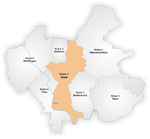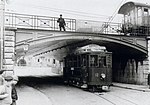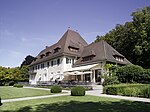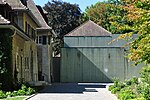Vitudurum
Archaeological sites in SwitzerlandCultural property of national significance in the canton of ZürichHistory of ZürichRoman towns and cities in SwitzerlandWinterthur

Vitudurum (sometimes Vitodorum) is the name of a Roman vicus, those remains are located in Oberwinterthur, a locality of the municipality of Winterthur in the canton of Zürich in Switzerland.
Excerpt from the Wikipedia article Vitudurum (License: CC BY-SA 3.0, Authors, Images).Vitudurum
Obertor, Winterthur Stadt
Geographical coordinates (GPS) Address Nearby Places Show on map
Geographical coordinates (GPS)
| Latitude | Longitude |
|---|---|
| N 47.5 ° | E 8.7333333333333 ° |
Address
Römerhof
Obertor 1
8400 Winterthur, Stadt
Zurich, Switzerland
Open on Google Maps










